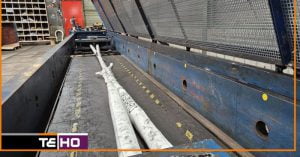 Mooring ropes are essential to the safety and stability of vessels during docking and mooring operations. However, over time, the performance of these ropes can degrade due to wear and tear, exposure to harsh environmental conditions, and frequent use. According to the MEG4 (Mooring Equipment Guidelines, 4th Edition) by the Oil Companies International Marine Forum (OCIMF), it is recommended to retire mooring ropes when their residual strength falls below 75% of the Ship Design Minimum Breaking Load (MBL).
Mooring ropes are essential to the safety and stability of vessels during docking and mooring operations. However, over time, the performance of these ropes can degrade due to wear and tear, exposure to harsh environmental conditions, and frequent use. According to the MEG4 (Mooring Equipment Guidelines, 4th Edition) by the Oil Companies International Marine Forum (OCIMF), it is recommended to retire mooring ropes when their residual strength falls below 75% of the Ship Design Minimum Breaking Load (MBL).
This guideline helps shipowners and technical managers make informed decisions regarding the safety and operational effectiveness of their mooring systems. Ensuring that your mooring ropes maintain adequate strength is crucial for preventing accidents and ensuring long-term reliability.
MEG4 and residual strength testing
Residual strength testing plays a critical role in assessing the performance of mooring ropes. This testing method reveals how much strength the rope retains after prolonged use, providing valuable data on its performance. Regular testing allows shipowners to make data-driven decisions about the retirement and replacement of mooring ropes, ensuring compliance with MEG4 guidelines and preventing failures during critical operations.
By continuously monitoring the residual strength of your mooring lines, you can optimize your mooring system and avoid unforeseen rope failures, thereby ensuring the safety of your crew and vessel.
Where to access residual strength testing Services
At TEHO Ropes Europe, we are committed to providing high-quality services that align with MEG4 standards. We offer residual strength testing at our key stock points in Houston, Rotterdam, and Singapore. By utilizing our testing services, you can enhance the safety and performance of your vessel’s mooring system.
Contact us today for more information on how we can help you with residual strength testing and other services to improve maritime safety.
